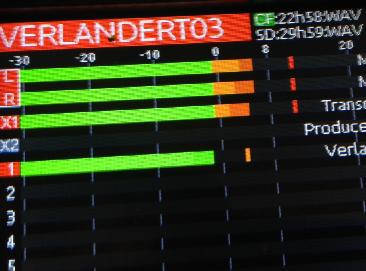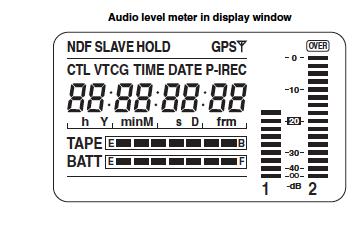Properly recording dialog begins with a gain structure that maximizes your ability to get the most out of each and every voice in the environment that you're in.
There seems to be some confusion these days because of the two different sets of meters that we use. Cameras operate utilizing the digital DBFS method (decibels over full scale) with 0 being the point of no return resulting in clipped audio. While we in the audio world still use the analog scale that we've been using for quite a few decades. So standards where adopted to align the metering systems. In America, SMPTE designated the standard to be 0 = -20. Which gives the mixer 20 db of headroom before clipping on the digital recorder. Remember audio meters flow up to 0 then 20 db past. Thats where the synchronicity is and also where the misconceptions seem to be occurring. 0 on the camera is clipping... 0 on the mixer is your base average volume unit.
I mix viewing VU/Peak combined. The meter to the right shows a mix averaging around +6 (the average vu tends to float between 0 and +8) with the peaks right around +16 (decay had set in for the pic). The meter below right is a camera meter from the Panasonic HDX-900 manual so using that as a guide you can see that my mix would land around -13 with the peaks around -5. Remember that -20 you are looking at in this example is 0 on your mixer.
I know this is a simplistic overview but sadly it seems to really be needed. If in doubt ask the show where they'd like tracks delivered and shows should also provide the average and peak levels they'd like their shows recorded at in the tech spec sheets.
Understand the relationship between the mixer and camera... You'll be a much better mixer with this very basic understanding.


Above - Properly built gain structure
Below - Example of camera DBFS meter
(HDX-900 manual)
Thom Shafer / www.televisionsound.com
Home ----- Tech Tips ----- Credits/Reel ----- Photos ----- Contact Me
"Being a great mixer is knowing what sounds good and what doesn't as it applies to the situation you find yourself in..." - Thom Shafer